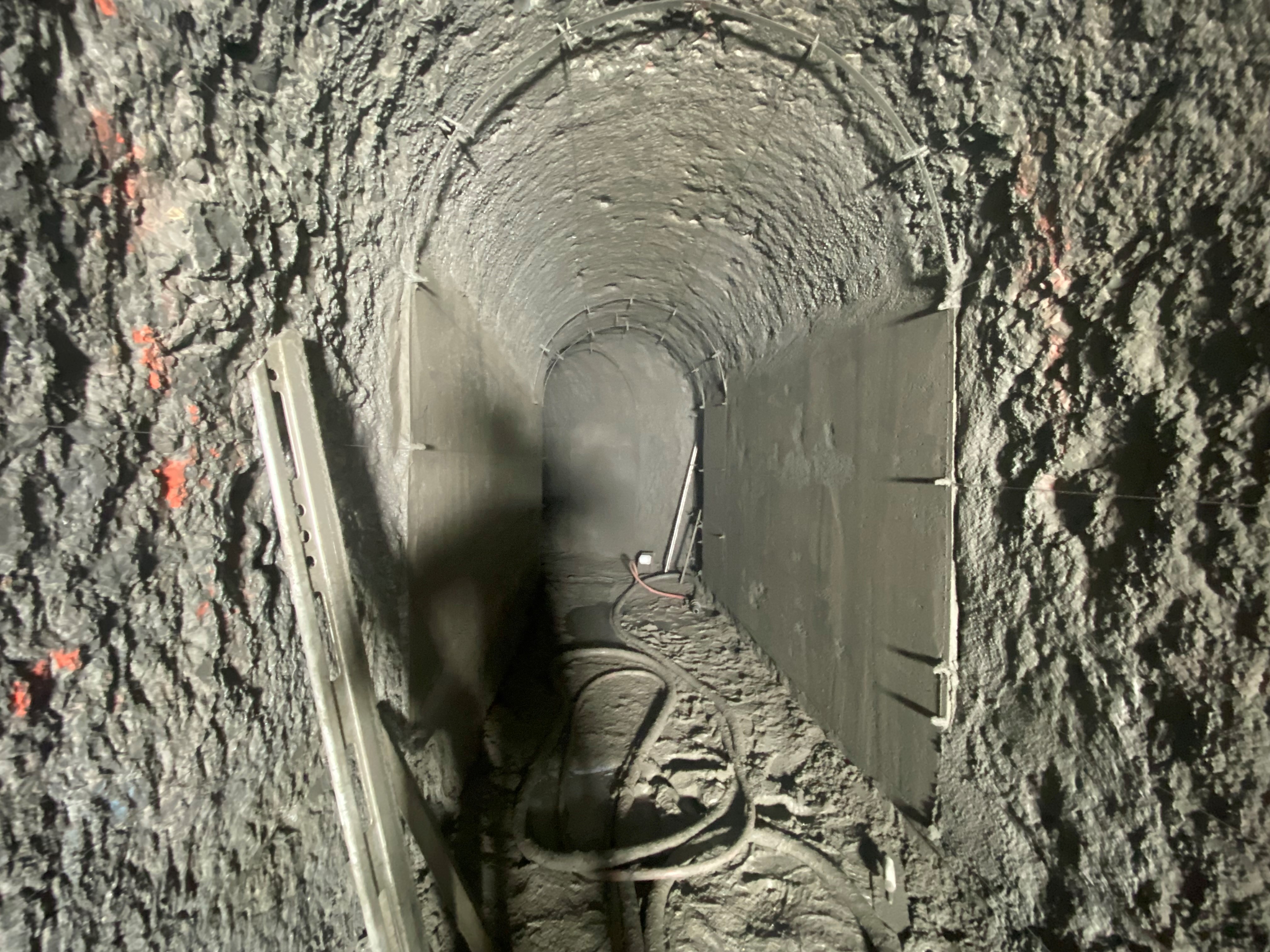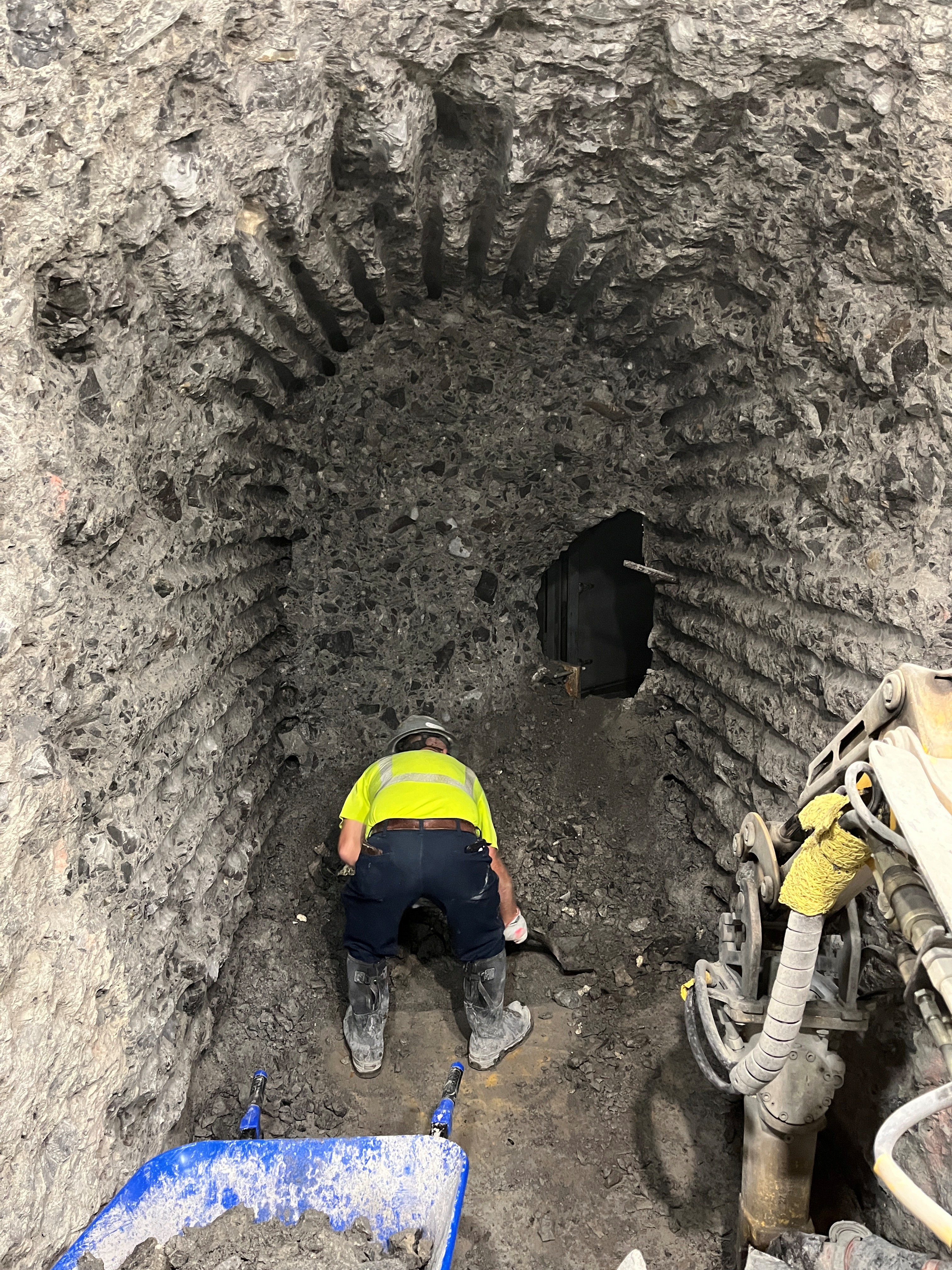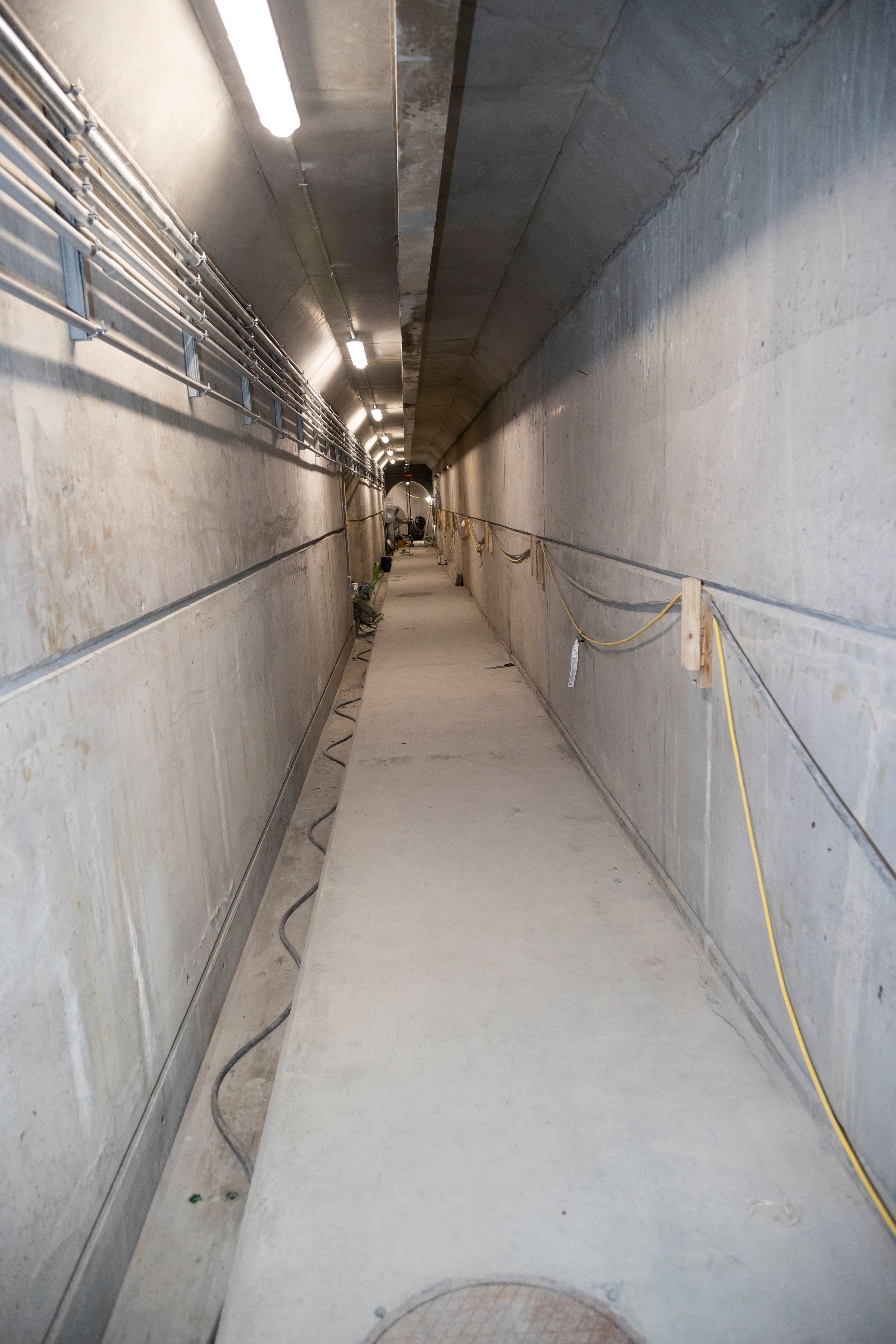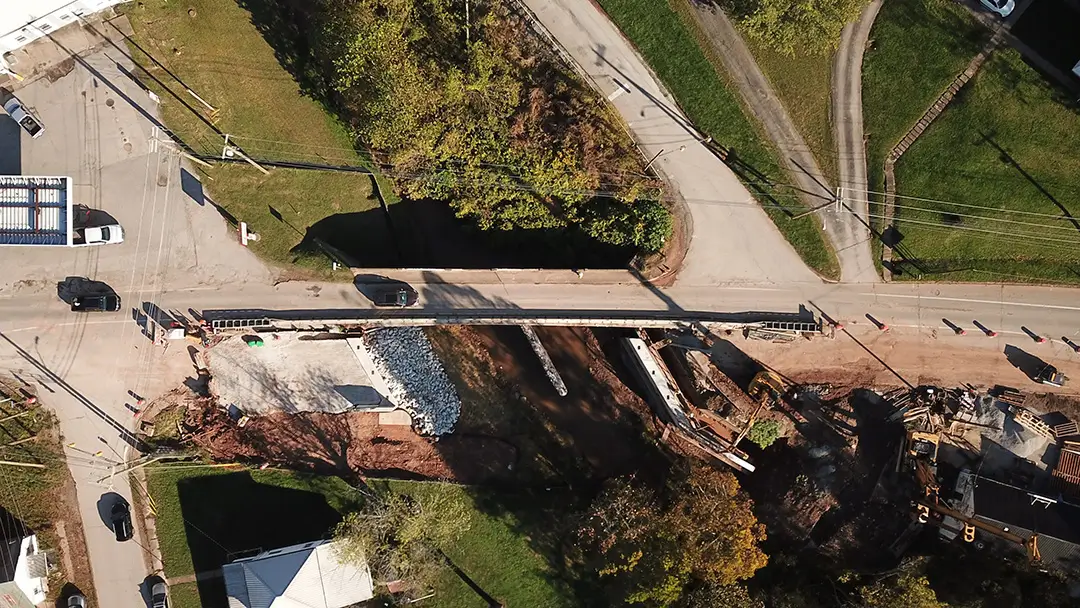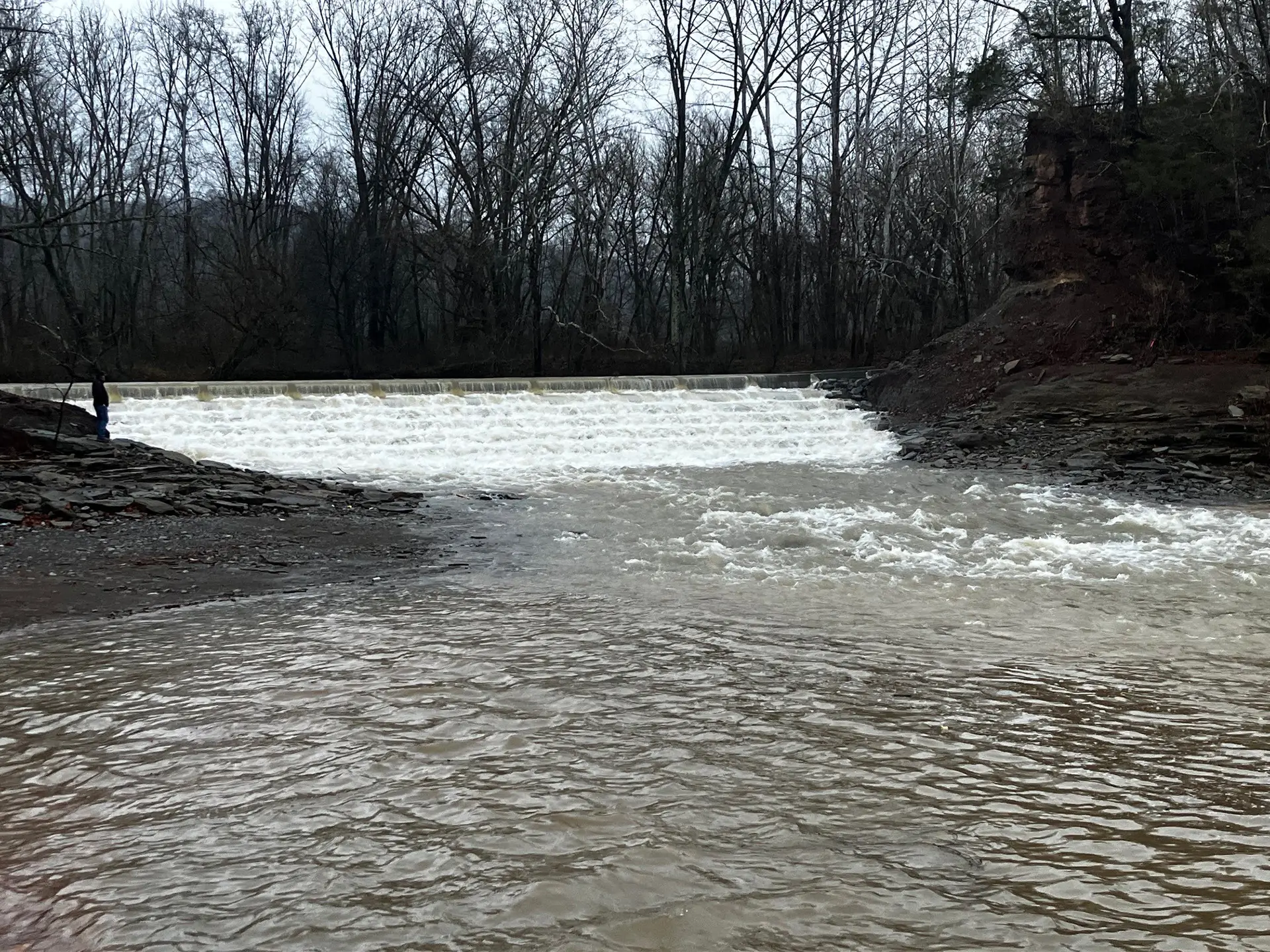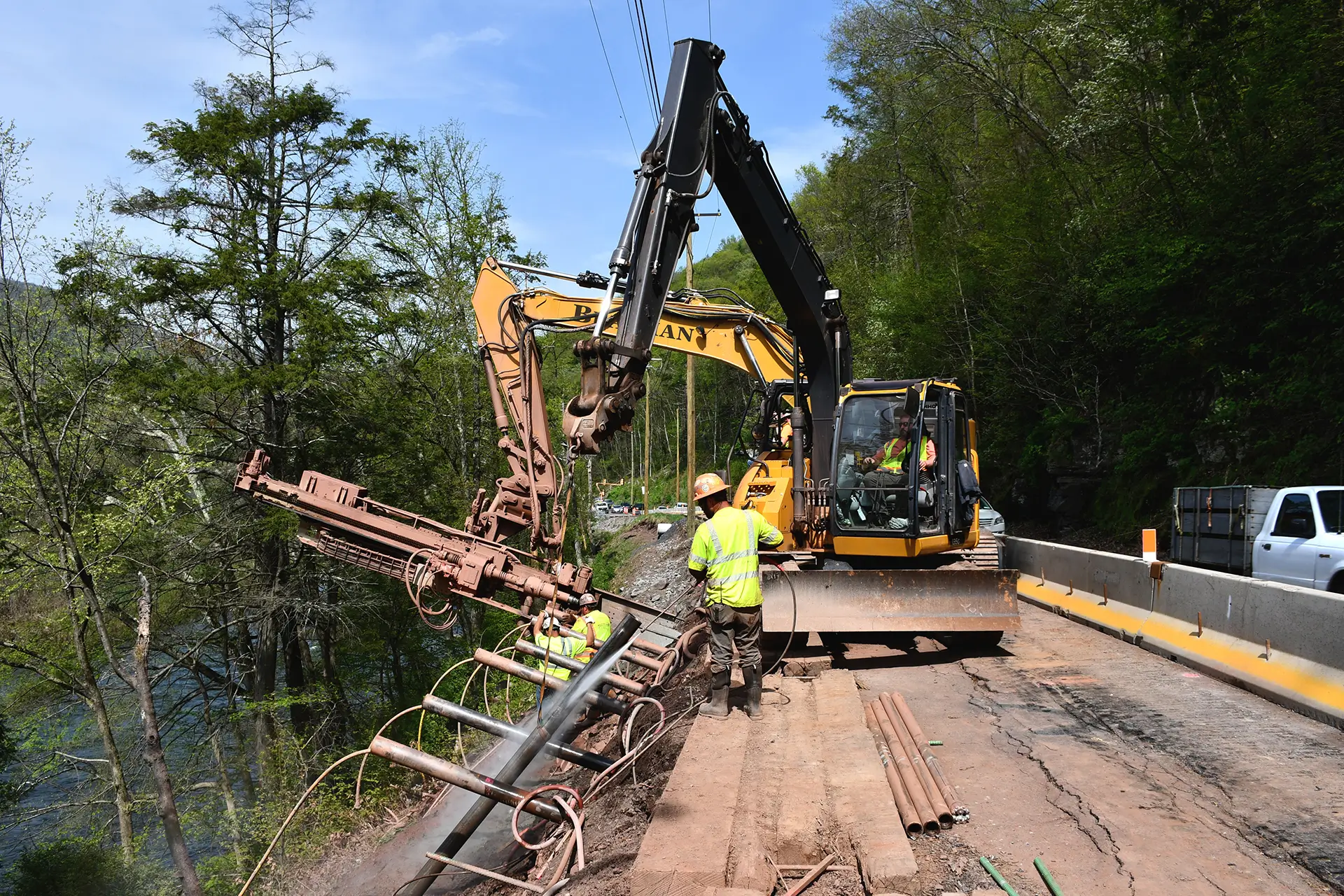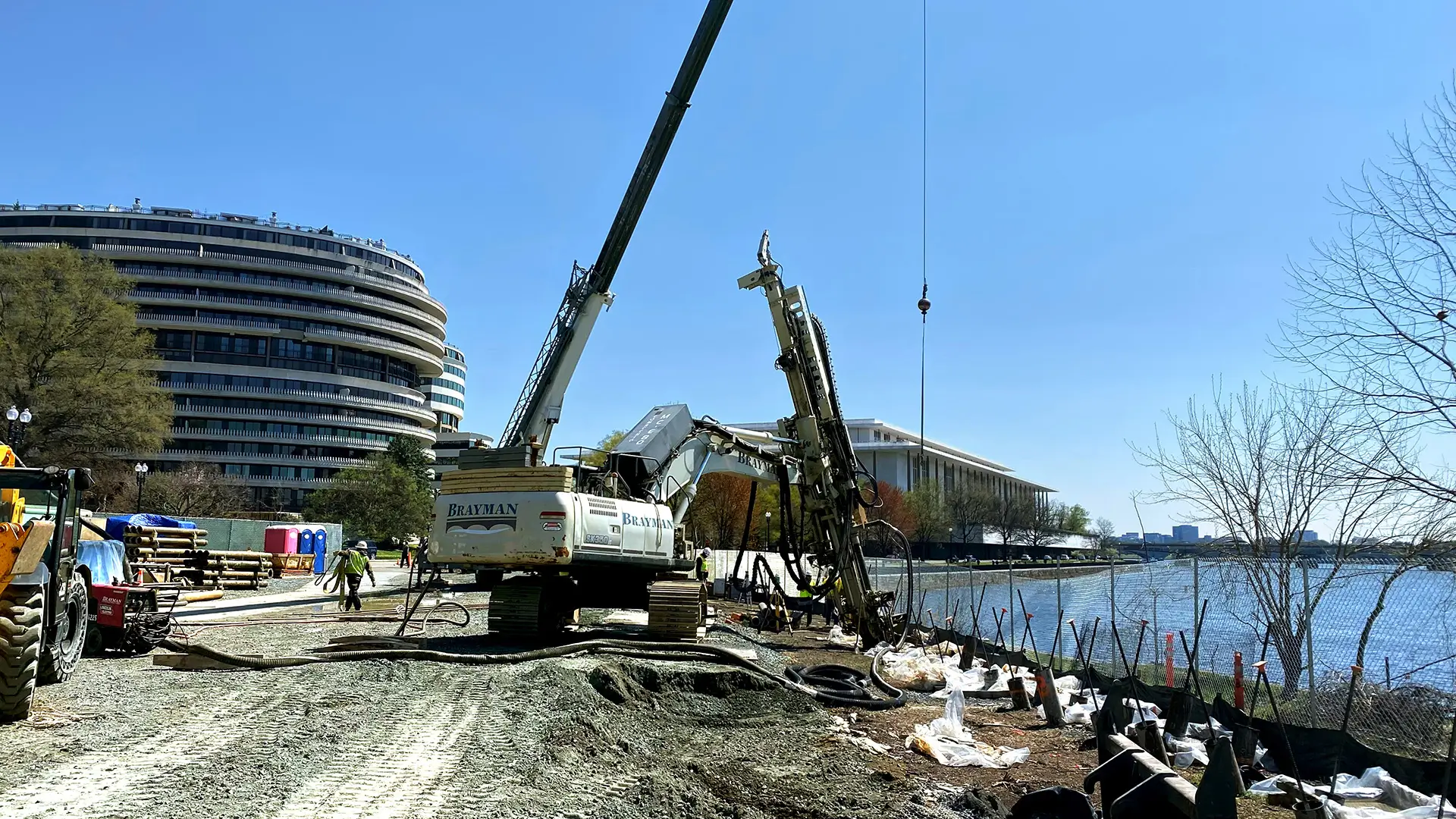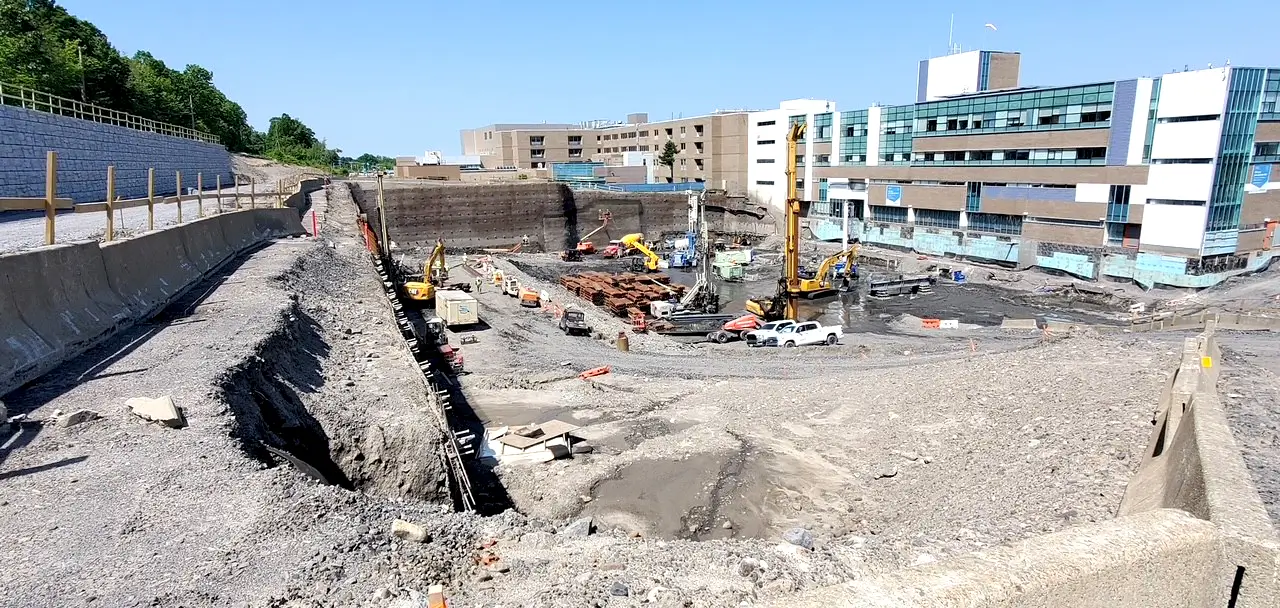Tunneling a West Virginia Dam: A Modern John Henry Story
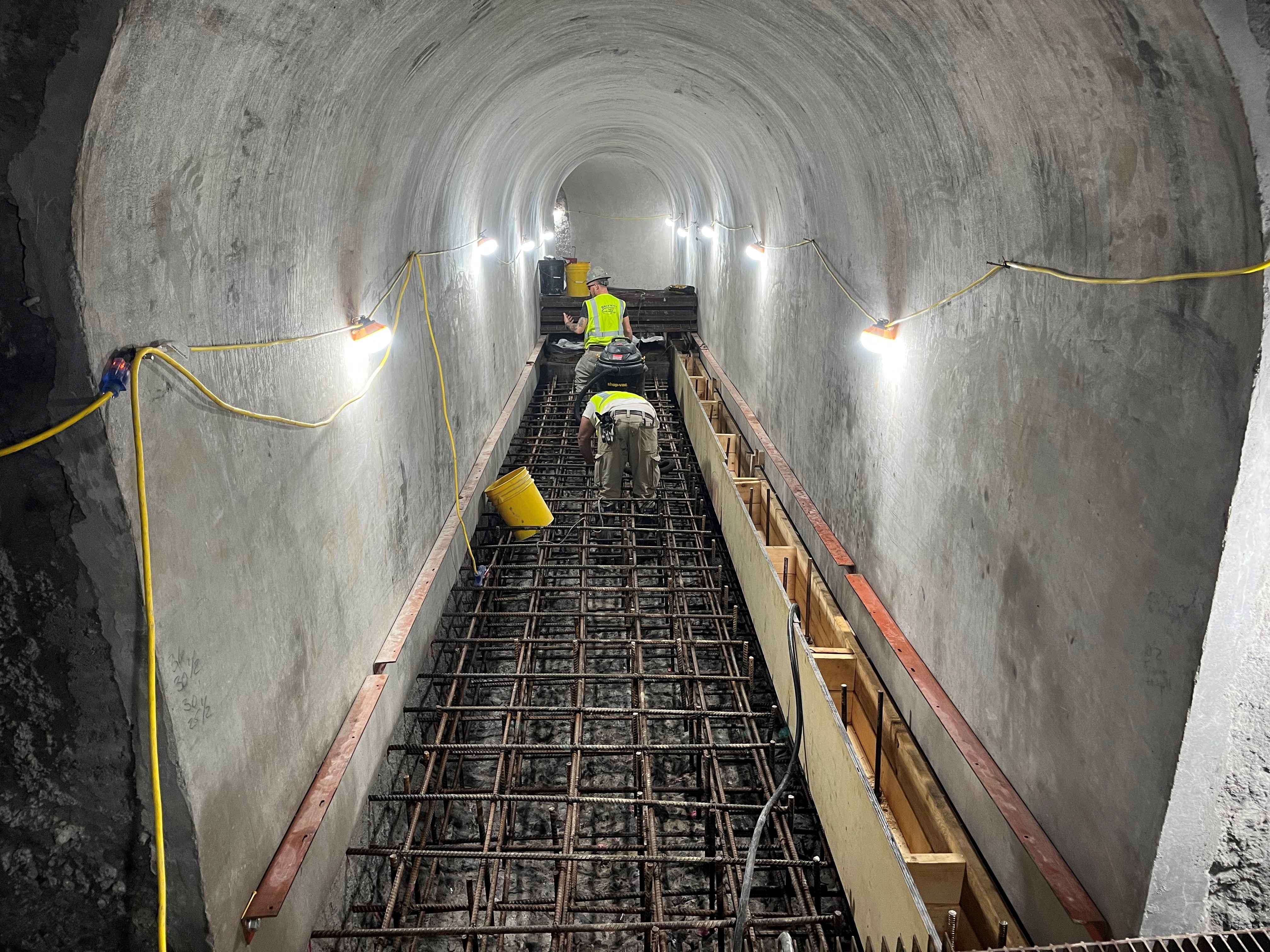
James N. Gagliardi, P.E. (Brayman Construction Corporation) and Ryan D. Haynes, P.E. (USACE) delivered this presentation at the 2025 USSD Conference.
Introduction
As part of the ongoing rehabilitation at Bluestone Dam, a new tunnel was required to connect the existing dam drainage gallery to the new stilling basin divider wall gallery. Because of the difficult geometry, required work sequencing, and relatively small size of the tunnel, modern tunneling techniques were precluded requiring tremendous amounts of manual labor.
Project Background
Bluestone Dam is a concrete gravity flood control structure constructed, owned, and operated by the United States Army Corps of Engineers (USACE). It is located in Summers County, WV, on the New River, less than ten miles from the John Henry Railroad Tunnel site on the C&O Mainline. The current project, Phase 5, is focused on rebuilding the primary spillway stilling basin and is the final phase of a multi-decade dam rehabilitation program in the New River and Kanawha River basins.
The tunnel is part of a staged construction process. First, a temporary cellular cofferdam was constructed to bifurcate the spillway. The right side of the spillway stilling basin was then dewatered to allow for the installation of a permanent divider wall, a reinforced concrete bottom and new baffle blocks. These features are being anchored with high-capacity multi-strand rock anchors. Once complete, the temporary cofferdam will be removed, the right side will be re-watered, and the rehabilitation will be started on the left side of the spillway.
Construction Details and Challenges
The new tunnel is about 100 feet long and includes two 45-degree bends. In the interest of dam safety, the new tunnel is not allowed to break through the dam’s downstream face and connect to the new divider wall gallery until that portion of the new spillway is complete and functional. As such, all work had to be accessed through the existing dam gallery. This meant all the tools, personnel, equipment, and fresh air had to be supplied through the same access the demolition debris had to exit through. Access to the work area was about a five-hundred-foot walk through the existing dam gallery, including two flights of stairs. Adjacent to the stairs is a vertical hoist-way for materials and equipment.
Before and after bid time, the contractor was unable to find interested tunneling subcontractors to perform the work. The cross-section geometry of the tunnel, the relatively short length, the two bends, and the requirement to work from the inside of the dam eliminated many options e.g. a micro-tunneling TBM. The finished height of the tunnel is 8-feet with a width of 6-feet and radiused roof. Over excavation of the floor is required to allow the placement of a gutter and other features. Also, a larger cross section is required at both ends of the tunnel to allow for the installation of watertight doors.
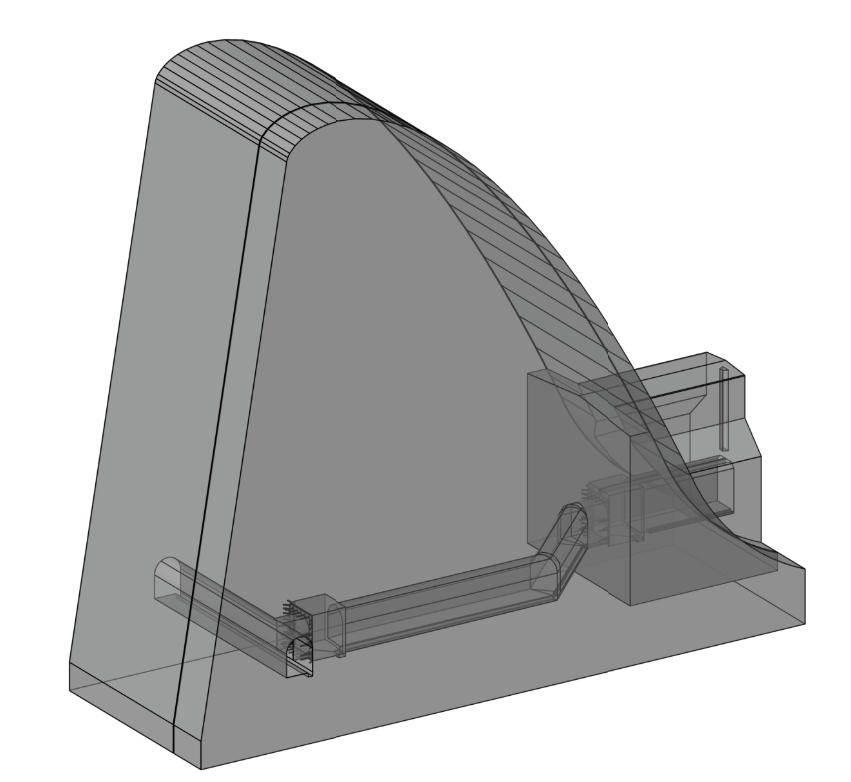
The tunnel was advanced by line drilling the perimeter with electric diamond core drills. Concrete was removed with a small electric demolition robot equipped with a hydraulic breaker and milling head. All of the demolition debris was carted away with wheelbarrows, pushed through the existing gallery and hoisted two stories to the dam gallery exit. A typical cross section is shown in Figure 2.

While the project specifications allowed for the existing concrete to be the final finished surface of the tunnel, the tight tolerances required and the large aggregate size, up to 6-inches, made precision demolition impractical. As such, a dry-mix shotcrete subcontractor was hired to place back the finished surface of the tunnel.
Safety Considerations
Adhering to the updated OSHA Silica requirements was a challenging aspect of the project. A combination of ventilation, monitoring, wet suppression, and testing were employed to effectively control the hazards of working in a confined environment. When wet suppression was not feasible, personnel protective equipment (PPE), including powered air-purifying respirators (PAPR), was used to ensure the safety of the workers. Both are shown in Figure 3. During the demolition, the only access for ventilation was through the existing dam instrumentation gallery.
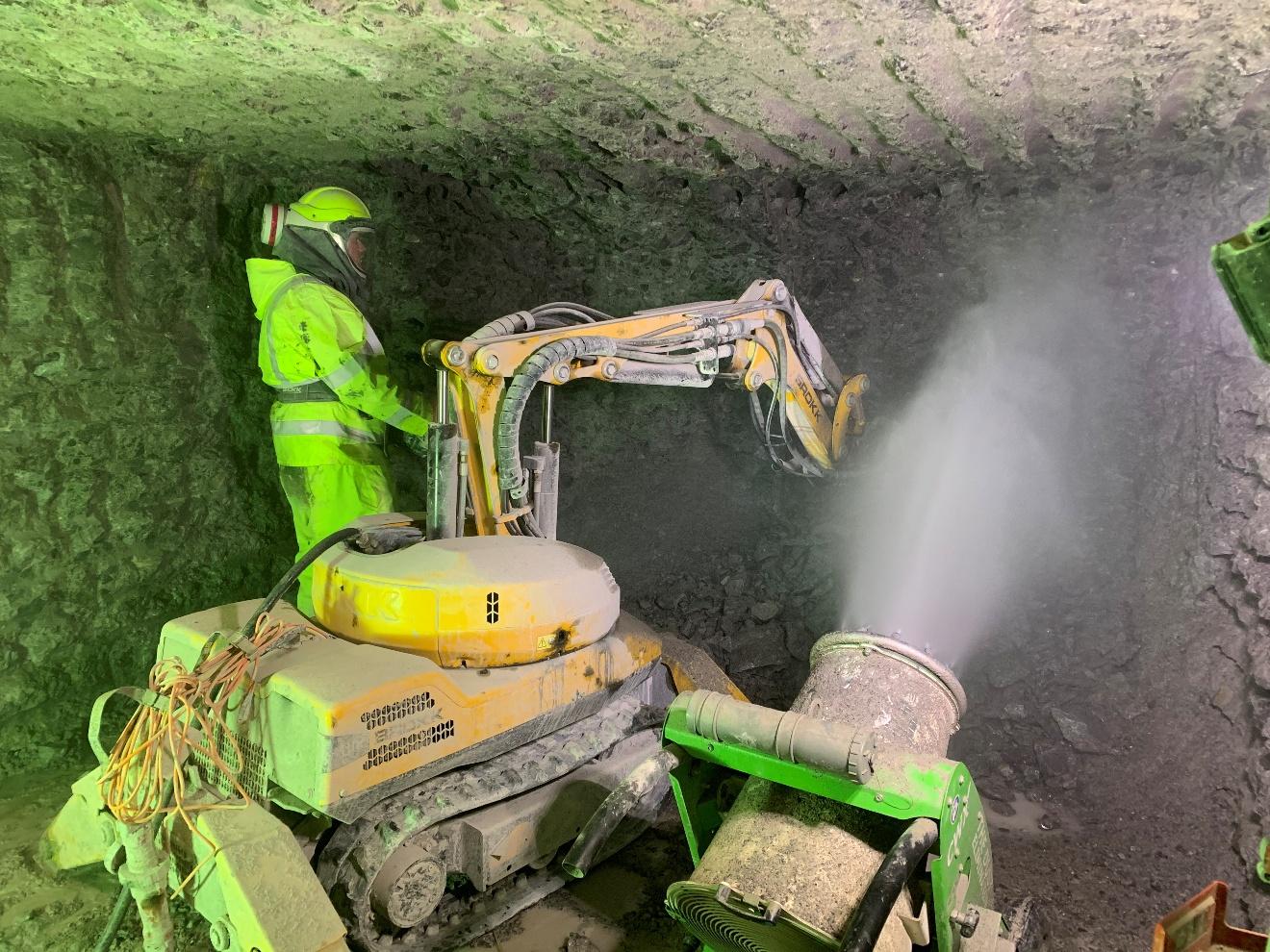
Conclusions
At the time of submission, the tunnel excavation was substantially complete except for breaking through to the downstream face of the dam. This cannot be completed until the new concrete divider wall is completed.
Related News
Get in Touch
Interested in Partnering or Joining Our Team? Connect with us to explore opportunities for collaboration and career growth at Brayman Construction.



